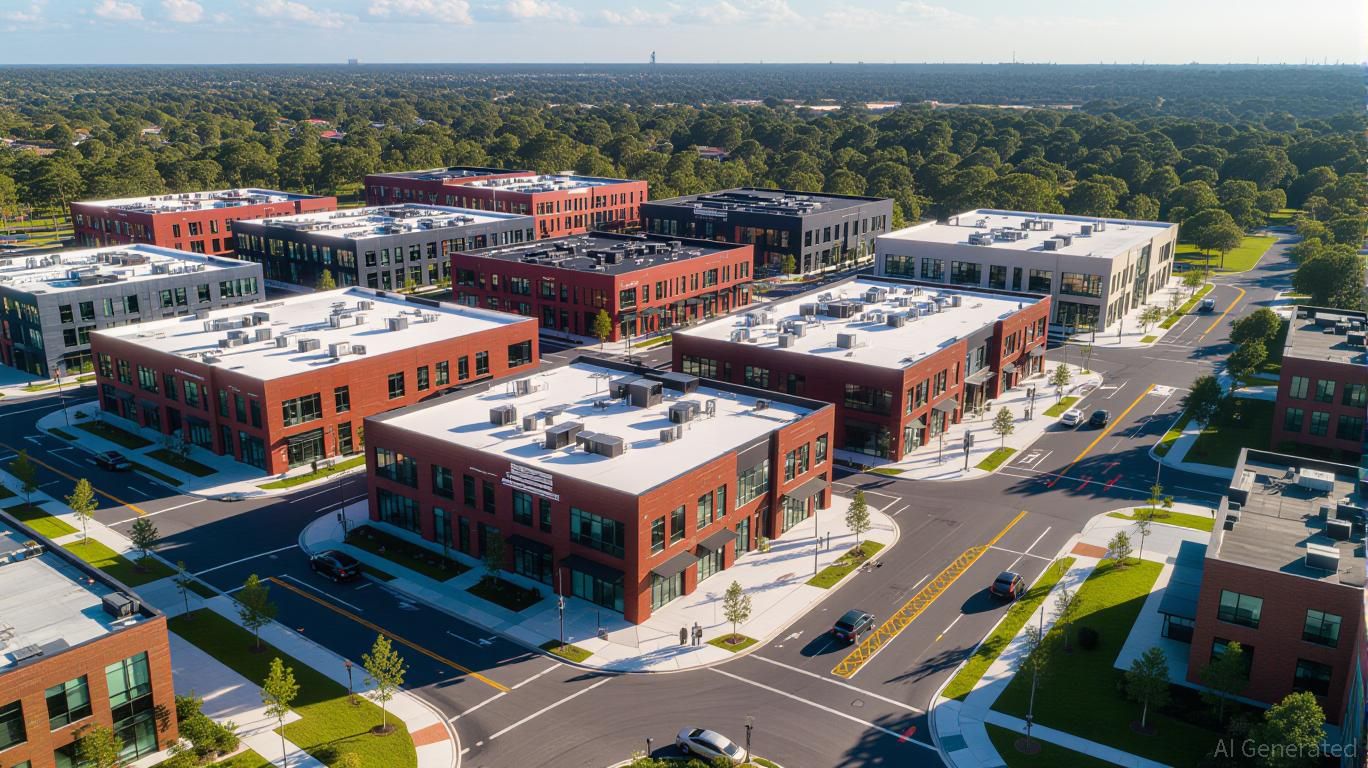The redevelopment of the Xerox Webster Campus in upstate New York serves as a notable example of how infrastructure investment can drive industrial real estate growth. Through a mix of public-private collaboration, municipal restructuring, and targeted infrastructure improvements, this project is transforming a 300-acre brownfield into a thriving industrial center. For developers, REITs, and private equity investors, this effort highlights the value that "shovel-ready" locations can offer in a landscape shaped by evolving supply chains and industrial needs.
A Framework for Infrastructure-Driven Expansion
Central to the Xerox Webster Campus redevelopment is a $9.8 million FAST NY grant, which has
supported essential infrastructure enhancements
including road upgrades, expanded sewer capacity, and modernized electrical systems. These upgrades go beyond surface improvements; they are crucial for making the site competitive with leading industrial regions. By closing longstanding infrastructure gaps, the project has
made available over one million square feet of industrial space
by 2025, with a focus on advanced manufacturing, technology, and food processing industries.
The project's success is closely tied to broader economic planning.
Governor Kathy Hochul's strategy
for a "sustainable economic ecosystem" positions infrastructure as a key driver for industrial growth. This approach includes zoning changes and public investment to attract sectors such as semiconductor production and renewable energy, both of which depend on strong logistics and energy infrastructure. The Community Access Project, another state-backed initiative with $2.041 million in funding, further boosts the campus's prospects by improving connectivity and integrating it with the local area
as outlined in state planning reports
.
Scaling Up Through Public-Private Partnerships
The Xerox Webster Campus illustrates how public-private partnerships (PPPs) can help manage risks in large-scale industrial developments. By blending government and private funding, the project overcomes many of the financial and regulatory challenges typical of brownfield projects. For example, the $500,000 federal grant for the Community Access Project shows how
combining funding sources can increase local benefits
.
This approach is especially relevant in the current industrial property market. According to a 2025 Clarion Partners report,
industrial REITs and developers are placing greater emphasis on
sites with established infrastructure and clear regulatory paths. With its prepped land and upgraded utilities, the Xerox campus provides a "shovel-ready" setting that shortens construction periods and reduces upfront costs—an important edge in a market where rapid occupancy is critical.
Investment Opportunities in Ready-to-Build Markets
The Xerox Webster Campus is part of a broader trend. From 2023 to 2025, industrial real estate investment has increasingly focused on returns tied to infrastructure. While short-term obstacles like softer rents and economic uncertainty remain,
long-term growth factors are still strong
— including e-commerce, nearshoring, and product turnover. For investors, this presents a timely chance to secure assets in markets with favorable structural trends.
Developers are shifting toward smaller, multi-tenant buildings that provide more stable cash flow and reduce the risks of single-tenant properties
as highlighted by NAIOP studies
. The Xerox campus’s emphasis on adaptable, contemporary industrial spaces fits this movement, as does its focus on community-oriented features like pedestrian-friendly layouts and natural lighting
according to industry specialists
. Likewise, REITs with holdings in high-demand coastal areas are using their financial strength to purchase top-tier properties in urban infill locations, while those outside coastal markets are benefiting from onshoring trends in secondary cities
based on REIT research
.
Meanwhile, private equity groups are expanding into infrastructure and private credit to achieve distinct returns
as noted by PwC industry reports
. The Xerox project’s blend of public and private involvement serves as a model for these strategies, merging state-supported risk reduction with private sector efficiency. For institutional investors, this hybrid approach helps limit exposure to unpredictable construction costs and regulatory setbacks, which have affected returns in recent years
according to market analysis
.
Wider Lessons for Industrial Real Estate
The Xerox Webster Campus redevelopment also demonstrates the value of municipal adjustments in unlocking potential. By updating land use classifications and simplifying permitting, local authorities can speed up industrial growth in areas that have been underutilized. This is especially significant in regions like the Sunbelt and Midwest, where
affordable land and available workforce make
secondary markets well-positioned for sustained expansion.
For REITs and private equity, the message is clear: infrastructure-led development is now a mainstream approach. Clarion Partners points out that
top-performing investors will focus on
properties with established infrastructure, regulatory stability, and alignment with broader economic trends. The Xerox campus, with its mix of public investment, targeted improvements, and strong industrial demand, provides a replicable model for other brownfield redevelopments across the country.
Conclusion
The Xerox Webster Campus redevelopment is more than just a local achievement—it reflects the broader transformation of the industrial real estate sector. By integrating infrastructure upgrades, public-private partnerships, and innovative design, the project shows how industrial properties can be repositioned to address the needs of a post-pandemic economy. For developers, REITs, and private equity, the main lesson is clear: in a time of supply chain shifts and the rise of e-commerce logistics, the best opportunities are found where infrastructure investment and strategic planning intersect.
